There are so many problems that hear about in the world today that seem overwhelming and you feel you can’t do anything about. This webpage was written to provide you with information on solutions to problems YOU CAN do something to solve. Join MRBO in our mission to help conserve native wildlife and their habitats!
Create a Backyard Habitat
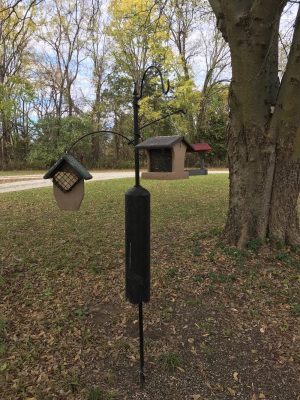 There are four main ways to create a bird-friendly backyard habitat:
There are four main ways to create a bird-friendly backyard habitat:
- Maintain bird feeders
- Maintain a bird bath
- Put up bird houses
- Plant native plants
Lessen your use (and consumption) of chemicals
A good habitat provides food, water and shelter; which is important for both migratory and resident birds. Even small actions, such as planting sunflower seeds or maintaining a bird feeder, are important for bird conservation. The key to planting a good habitat is diversity. Planting a variety of native plants provides the fruits, berries, seeds nuts, and nectar that different bird species need throughout the entire year. Also, many species of trees, shrubs, grasses, and vines provide excellent shelter and nesting sites for birds. Many native plant are easy to grow because they are adapted to the region and require little additional water and no pesticides! Pesticides, herbicides, and other household and agricultural chemicals are not only bad for birds, they’re bad for you. There are many actions that you can do to help reduce the harmful effects of pesticides to birds, humans, and other animals: Do not use pesticides unless there is no safe alternative, plant native plant landscapes to use less water and avoid pesticides, do not feed birds contaminated seed, research and try safe alternative pest control methods, and buy organically grown products.
If you would like more information about the benefits of native plants and how they can attract birds to your yard, check out these resources!
Prevent Window Collisions
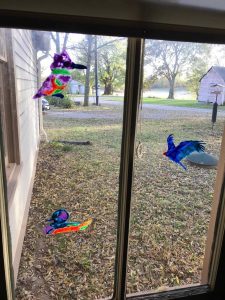 Each year, more than 100 million North American birds die from flying into windows on homes and buildings. Glass is transparent and reflective and, therefore, the birds either do not see the glass or they see trees and plants reflected in it. The good news is that window strikes can be easily prevented by hanging strips of material, such as ribbons, string, or yarn, on the outside of windows to alert birds about the glass. You can also simply place stickers on the window! You can either make window decals or buy them. MRBO can provide your first set for free!! In addition, you can purchase your own at windowalert.com. You can even make your own creative window decals!
Each year, more than 100 million North American birds die from flying into windows on homes and buildings. Glass is transparent and reflective and, therefore, the birds either do not see the glass or they see trees and plants reflected in it. The good news is that window strikes can be easily prevented by hanging strips of material, such as ribbons, string, or yarn, on the outside of windows to alert birds about the glass. You can also simply place stickers on the window! You can either make window decals or buy them. MRBO can provide your first set for free!! In addition, you can purchase your own at windowalert.com. You can even make your own creative window decals!
Keep pets from becoming predators!
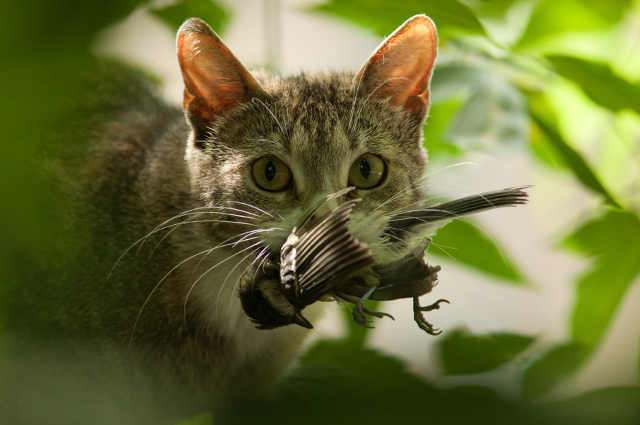 Domestic cats that are allowed outdoors are a significant threat to songbirds. According to the Smithsonian, cats kill 2.4 billion birds every year in the United States. Cats also kill other native animals, such as rabbits chipmunks, lizards, and butterflies. In addition, allowing cats outdoors exposes them to many harmful bacteria, parasites, viruses, and other diseases such as rabies, Lyme disease, feline leukemia, and hookworm. Outdoor cats are also vulnerable to being hit by cars, exposed to pesticides, and being attacked by other animals. Just ask your vet, it is safer and healthier for your cat to keep it indoors. Indoor cats are better for birds and better for cats!
Domestic cats that are allowed outdoors are a significant threat to songbirds. According to the Smithsonian, cats kill 2.4 billion birds every year in the United States. Cats also kill other native animals, such as rabbits chipmunks, lizards, and butterflies. In addition, allowing cats outdoors exposes them to many harmful bacteria, parasites, viruses, and other diseases such as rabies, Lyme disease, feline leukemia, and hookworm. Outdoor cats are also vulnerable to being hit by cars, exposed to pesticides, and being attacked by other animals. Just ask your vet, it is safer and healthier for your cat to keep it indoors. Indoor cats are better for birds and better for cats!
Check out these resources:
Not enough evidence for you? Here is even more reading material…“Responding to misinformation and criticisms regarding United States cat predation estimates”
Choose Shade-grown Coffee
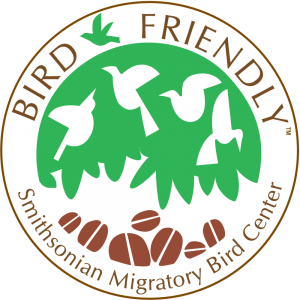 There is a worldwide effort to educate and support coffee growers who grow their crop organically and underneath the canopy of the tropical forest instead of clear-cutting. We are doing all we can in North America to conserve habitat for migratory birds, but it will all be for naught if we don’t do all within our power to conserve habitat on their wintering grounds. The Smithsonian’s Migratory Bird Center provides more information and lists of sources from which you can purchase.
There is a worldwide effort to educate and support coffee growers who grow their crop organically and underneath the canopy of the tropical forest instead of clear-cutting. We are doing all we can in North America to conserve habitat for migratory birds, but it will all be for naught if we don’t do all within our power to conserve habitat on their wintering grounds. The Smithsonian’s Migratory Bird Center provides more information and lists of sources from which you can purchase.
Reduce, Reuse, Recycle
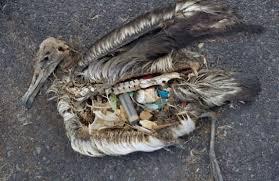 We know, you’ve heard it a thousand times. But when you think of throwing something “away”, remember, there is no “away”. It goes somewhere, and you may not like where it ends up. Besides being unsightly, trash often ends up badly for birds and other wildlife. Don’t assume that all your trash gets neatly tucked away. See http://www.plasticoceans.net/. For a good summary of the problems inherent in plastic bag waste and additional resource links, check out www.reusethisbag.com.
We know, you’ve heard it a thousand times. But when you think of throwing something “away”, remember, there is no “away”. It goes somewhere, and you may not like where it ends up. Besides being unsightly, trash often ends up badly for birds and other wildlife. Don’t assume that all your trash gets neatly tucked away. See http://www.plasticoceans.net/. For a good summary of the problems inherent in plastic bag waste and additional resource links, check out www.reusethisbag.com.